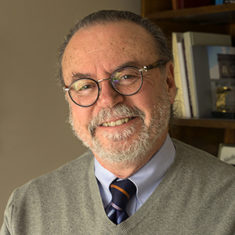We Need To Elevate Our Use Of Language In Business Communication.
By Thomas J. Roach
Objective news stories, television sound bites and social media abbreviations have dumbed down human communication. What happened to language that is creative and thought-provoking and inspirational?
It doesn’t matter if you write business reports, emails or Facebook posts, there are daily rhetorical opportunities for language that is more meaningful than “Go for it” and “LOL.”
On the Sublime is a rhetorical text written between the first and fourth centuries and attributed to Cassius Longinus. Today it remains the primary text on how to achieve exalted human expression.
Longinus contends that the most sublime expression comes from the grandeur of our ideas. Noble thoughts, pregnant with meaning, are so powerful they can be sublime even without the aid of many words.
One Word Examples
Here are two famous one-word examples expressing strength and defiance that come from wars fought 2,000 years apart.
In the 4th century BCE, when Philip of Macedon was sweeping across Greece with his massive army, he told the Spartans, “Submit immediately. If I invade, you will be destroyed, never to rise again.” “If,” was the Spartan reply. The word spoke volumes; Philip decided to bypass Sparta.
During World War II, when General Anthony Clement McAuliffe and the 101st Airborne were surrounded at the Battle of the Bulge, and a German major sent him an ultimatum giving them two hours to surrender or face annihilation, McAuliffe also sent a one-word reply: “Nuts.” The 101st held off the Germans and were rescued by Gen. George Patton’s 4th Armored Division.
Another source of sublimity is dignity and emphasis achieved through word order, as in, “I came, I saw, I conquered” (Julius Caesar) or, “We shall pay any price, bear any burden, meet any hardship, support any friend, oppose any foe” (John F. Kennedy). These quotes achieve a level of magnification through a rhetorical scheme called asyndeton, the elimination of conjunctions. Insert the word “and” after the commas, and the lines lose much of their impact.
Strategic Repetition
Strategic repetition is another powerful scheme. Moliere repeated words in reverse grammatical order in this scheme of repetition: “One should eat to live, not live to eat.”
In the song “What a Fool Believes” Michael McDonald used polypoton, the scheme of repeating words with the same root when he sang, “Trying to recreate what had yet to be created.”
Neil Armstrong used antithesis, the juxtaposition of contrasting ideas, when he said, “One small step for man; one giant leap for mankind.” His words echoed the rhetorical style of the president who announced the goal of landing a man on the moon, when said in his inaugural address, “Ask not what your country can do for you; ask what you can do for your country.”
The Aggregates Industry
Many companies strive for sublimity in their mission statements. Can you find grandeur in the aggregates industry?
LafargeHolcim thinks you can. The company states that it “offer[s] an unparalleled range of innovative cement, aggregates, asphalt, concrete products and construction services that have been the foundation for infrastructure projects across the globe.”
CEMEX says it has a “rich history of improving the wellbeing of those we serve through innovative building solutions, efficiency advancements, and efforts to promote a sustainable future.”
CRH uses antithesis for impact: “Yes, we are the leading building materials company in the world, but we’re your local partner.”
We use sublime language to describe corporations because they are big and important, but isn’t every division, department and job important? Let’s work some creativity and meaning into our everyday communication.
One way to start might be to write a mission statement for your department. What do you do, and why is it important? Say it with language that reflects your sincerity, commitment and pride. If you can do that, it might be a springboard to upgrading your email and reports.

Thomas J. Roach Ph.D., has 30 years experience in communication as a journalist, media coordinator, communication director and consultant. He has taught at Purdue University Northwest since 1987, and is the author of “An Interviewing Rhetoric.” He can be reached at [email protected].
